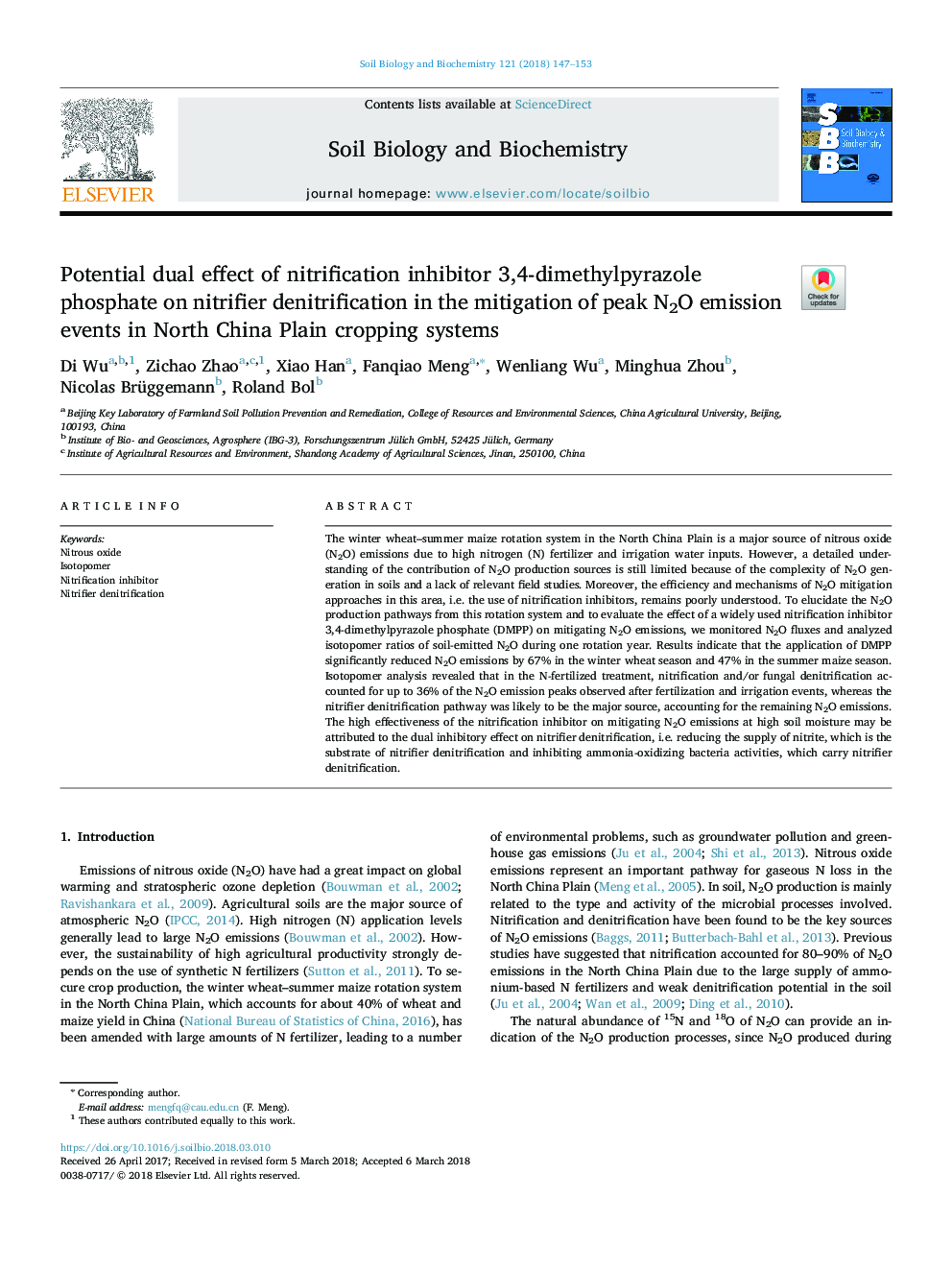| Article ID | Journal | Published Year | Pages | File Type |
|---|---|---|---|---|
| 8362800 | Soil Biology and Biochemistry | 2018 | 7 Pages |
Abstract
The winter wheat-summer maize rotation system in the North China Plain is a major source of nitrous oxide (N2O) emissions due to high nitrogen (N) fertilizer and irrigation water inputs. However, a detailed understanding of the contribution of N2O production sources is still limited because of the complexity of N2O generation in soils and a lack of relevant field studies. Moreover, the efficiency and mechanisms of N2O mitigation approaches in this area, i.e. the use of nitrification inhibitors, remains poorly understood. To elucidate the N2O production pathways from this rotation system and to evaluate the effect of a widely used nitrification inhibitor 3,4-dimethylpyrazole phosphate (DMPP) on mitigating N2O emissions, we monitored N2O fluxes and analyzed isotopomer ratios of soil-emitted N2O during one rotation year. Results indicate that the application of DMPP significantly reduced N2O emissions by 67% in the winter wheat season and 47% in the summer maize season. Isotopomer analysis revealed that in the N-fertilized treatment, nitrification and/or fungal denitrification accounted for up to 36% of the N2O emission peaks observed after fertilization and irrigation events, whereas the nitrifier denitrification pathway was likely to be the major source, accounting for the remaining N2O emissions. The high effectiveness of the nitrification inhibitor on mitigating N2O emissions at high soil moisture may be attributed to the dual inhibitory effect on nitrifier denitrification, i.e. reducing the supply of nitrite, which is the substrate of nitrifier denitrification and inhibiting ammonia-oxidizing bacteria activities, which carry nitrifier denitrification.
Related Topics
Life Sciences
Agricultural and Biological Sciences
Soil Science
Authors
Di Wu, Zichao Zhao, Xiao Han, Fanqiao Meng, Wenliang Wu, Minghua Zhou, Nicolas Brüggemann, Roland Bol,
